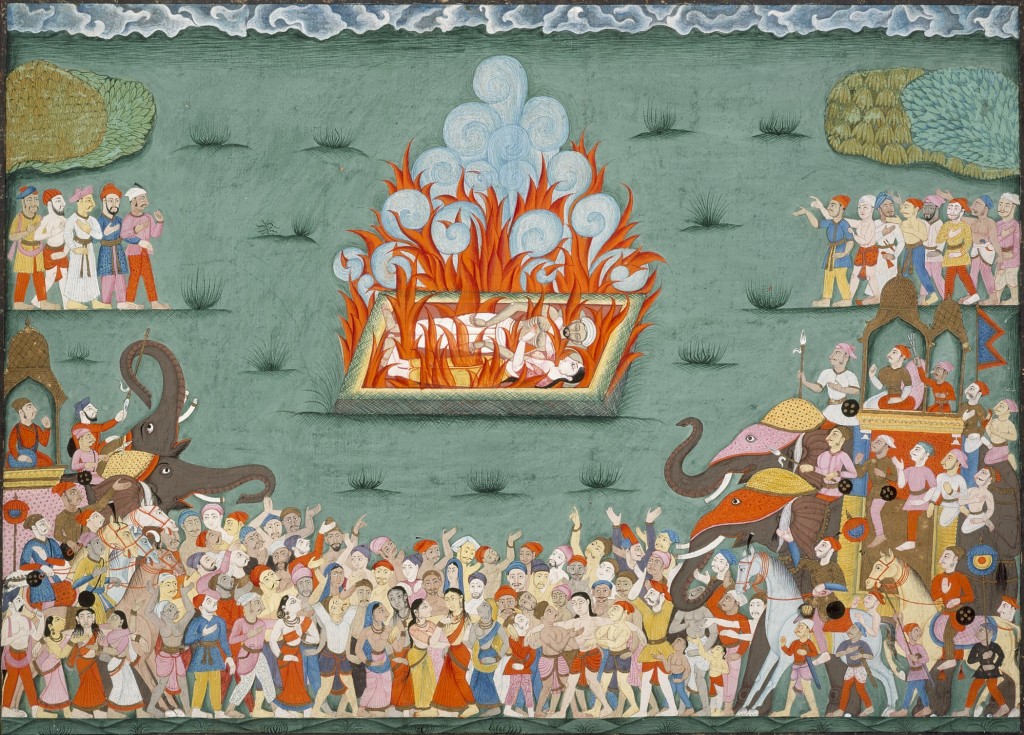Sati, meaning “good wife” in Sanskrit, refers to a very interesting and ancient Hindu mourning ritual, which generates quite a bit of attention due to its historically radical means of an end. Sati is a ceremony that was practiced after the death of a woman’s husband, during which the mourning woman was required to be burned alive in order to show mourning and devotion to their lost spouse. It began around the 10th century B.C. The ceremony was first practiced by the wives of kings, until it gained popularity in the Hindu religion and was practiced by other regional groups.
It use to be part of the Hindu religion that if a married woman’s husband was to fall ill and die or perish in battle, the spouse was expected to immolate; or end her life as an offering, to the spirit of her deceased husband. When this act was being carried out, the woman would also have to do so on top of the husband’s funeral pyre. If a woman refused this act, she was typically sought after, and more or less forcibly convinced to agree to its completion. After a woman went through this ritual, she was then revered and idolized by her community as a holy woman, as well as an object of worship.
A Greek geographer by the name of Strabo who traveled to India with Alexander the Great noted that the majority of these women were in fact, happy to burn in sacrifice of their husbands. The few who did not see this act as honorable and refused to die, were shunned and seen as outcasts of their community. According to historical data, the practice of sati came about because marriages were typically formed by love (as oppose to arranger marriage) in ancient India. When these marriages would take a turn for the worst, the woman would often poison the man and continue on to find a new lover. To put an end to the murders and to protect the women’s virtues, a law was enacted that stated that a woman who was left without a husband was required to burn alive in order to join him, or to be cast out of the community and live out the rest of her days as a widow.
While this bit of ancient history seemed desolate and painful, it was done out of respect for the sacred bond of marriage and love. In the Hindu religion, marriage is a sacred bond that binds two souls together for more than one lifetime. Even the Hindu gods and goddesses lead married lives and respect the duties and bonds that come with the Hindu concept of love and marriage. Although this ritual seems violent in our Western culture, it originated out of love, respect, and dedication between spouses.
The act of sati was banned in 1829 in India, and as late as 1920 in Nepal. This practice was also not necessarily limited to India, but was seen widespread throughout Asia, and remote, bordering parts of Europe.

